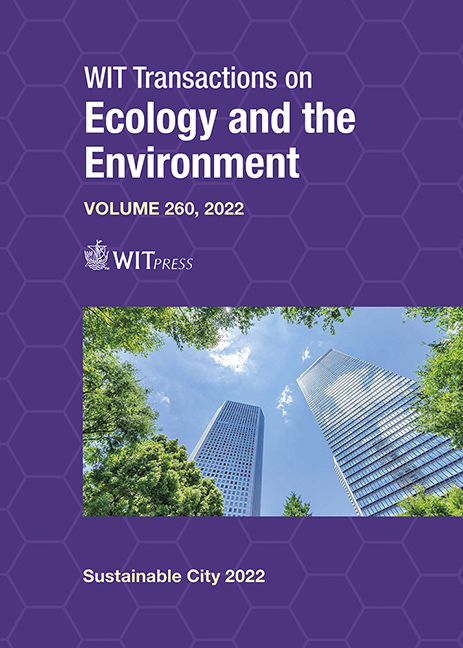PLANNING FOR NATURAL HAZARDS: AN INTEGRATED APPROACH INTO URBAN RISK ASSESSMENTS – A PERSPECTIVE ON SETTLEMENTS LOCATED IN HIGH-RISK AREAS IN MASERU, LESOTHO
Price
Free (open access)
Transaction
Volume
260
Pages
10
Page Range
147 - 156
Published
2022
Paper DOI
10.2495/SC220131
Copyright
Author(s)
RAMAPULANE MPHANYA, TRYNOS GUMBO, GEORGE ONATU
Abstract
With the advent of climate change and increasing urbanisation of the cities and towns, poor new residents in urban and peri-urban areas settle in high-risk locations with limited access to basic services and unfit structures which cannot resist harsh weather conditions. Therefore, managing and proactively identifying the risk by applying proper urban management and governance tools will improve the safety and liveability of cities. Maseru, like many other African cities, does not have proactive planning for natural disasters, and there is a common development of new settlements and extension of older settlements into high-risk locations. The majority of these settlements are located in areas susceptible to rockfalls and flash floods. Consequently, this paper focuses on planning for natural hazards in highrisk located settlements. A hazard impact assessment is conducted to measure the hazard risk and identification of physical assets and populations at high-risk hazards areas. A mixed method approach is used which includes an analysis of documents. Also, an observation and a transect walk and secondary data is utilised for the primary level risk assessment. The results of this study revealed that there is no planning for natural hazards in Lesotho. The results further reveal that more people are building in high-risk locations because these places are not zoned to alert people that they cannot reside within them. The study, therefore, recommends a clear working relationship between the Maseru Municipal Council and the Disaster Management Authority, to sensitise people about the dangers of constructing houses in high-risk locations. High-risk locations should be assessed properly by engineers and rezoned to prevent people from residing on them.
Keywords
high-risk location, natural hazards, climate change, rockfall, flash floods, urban risk assessment





